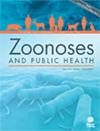Socioeconomic Determinants of Campylobacter spp. and Non-Typhoidal Salmonella spp. Infections in Ontario, Canada, 2015–2017: An Ecological Study
Abstract
Introduction
Campylobacter spp. and non-typhoidal Salmonella spp. (NTS) are major causes of enteric diseases in Ontario, Canada and worldwide. Although low socioeconomic status is generally associated with poor health outcomes, its relationship with enteric diseases in Ontario is not well known. We investigated area-level socioeconomic risk factors for reported enteric infections caused by Campylobacter spp. and NTS, commonly transmitted by food in Ontario, Canada, between 2015 and 2017.
Methods
Using negative binomial regression models, we examined the association between age- and sex-adjusted incidence rates (IRs) of laboratory-confirmed cases of Campylobacter spp. and NTS (aggregated to the forward sortation area [FSA] level), and FSA-level socioeconomic factors (median household income; percent population with bachelor's degree or higher; unemployment rate; and percent visible minorities, Indigenous peoples [as defined by Statistics Canada], total immigrants, recent immigrants and lone-parent families), adjusting for the population of the FSA from the 2016 Census.
Results
After controlling for the other variables in the final multivariable models, an increase in the percentage of the population with a bachelor's degree or higher and in the percentage of total immigrants in an FSA significantly increased the IRs of Campylobacter infections, while an increase in the median income and the percentage of total immigrants in an FSA increased the IRs of NTS infections.
Conclusions
Results from our study may inform public health interventions to reduce the rate of infections, for example, via food safety supports relevant to communities with larger numbers of Canadian immigrants. Further individual-level investigations of the socioeconomic factors identified in this study are needed. Also, future studies should assess the mechanisms through which socioeconomic risk factors affect infection rates in different communities.


 求助内容:
求助内容: 应助结果提醒方式:
应助结果提醒方式:


